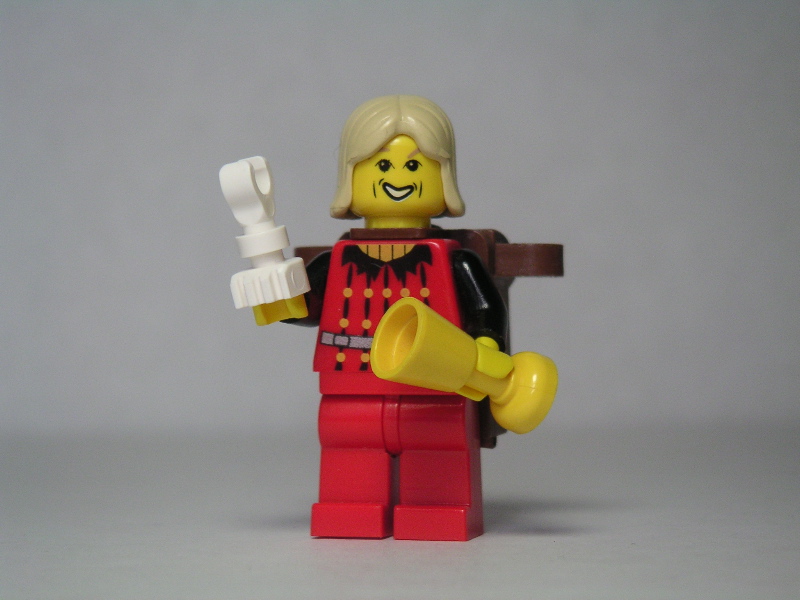Analogy, Textuality, and Materiality in the Medieval Studies Classroom: Presented at the ICMS, Kalamazoo, MI, 10 May, 2013

Image, “The Pardoner,” by Andrew Becraft (aka “Dunechaser” on Flickr), used courtesy of a Creative Commons license.
In his “An Attempt at a ‘Compositionist Manifesto,’” Bruno Latour advocates for a discursive practice he labels “compositionism.” Composition involves assembly, construction, creation. It challenges and calls into question the conceptual boundaries that often separate literary things, things such as books and scholarly essays, from non-literary things, things like paintings and musical scores, buildings, drama, and dance. Latour’s discussion of compositionism also seems to blur at least some of the distinctions we often make between literary “authorship” and literary “scholarship” by suggesting the artist and the humanist ultimately draw upon many of the same tools and processes.
The interdisciplinarity and multimodality Latour attributes to compositionism are inherent in the period and the historical artifacts we—as medievalists—study. Yet, for the most the part, the products of our scholarship—including pretty much everything from critical editions of canonical texts to interdisciplinary studies of art and architecture—conform to narrow disciplinary and aesthetic conventions born out of the dominance within modern academic discourse—and to some extent perhaps within our culture more broadly—of the print monograph. Gradually, over the past several years, however, medieval studies has begun to open itself to the discursive potential Latour unearths in his exploration of compositionism. A return to or recovery of the value of historical analogy in our study of the past has helped pave the way for new-form scholarship that is both ludic and serious, and formally as well as methodologically innovative. Very recently, Carolyn Dinshaw in How Soon is Now? offers what she describes as “a contribution to a broad and heterogeneous knowledge collective that values various ways of knowing that are drawn not only from positions of detachment but also . . . from positions of affect and attachment, from desires to build another kind of world.”
If Dinshaw is describing our discipline—medieval studies—as a “broad and heterogeneous knowledge collective that values various ways of knowing,” then why must the participation of our students within it be limited to reproducing, or attempting to reproduce, the forms and methods of what Latour calls “critique”? Can we not maintain intellectual rigor in our pedagogy, while at the same time embracing the range of productive activities imagined in Latour’s compositionism or Dinshaw’s “amateurisms”? These were some of the questions with which I began designing my upper-division Chaucer seminar last Fall.
Ultimately, I attempted to reconfigure textual studies, often identified as a point of divergence between “presentist” approaches relying on analogy and more traditional medieval scholarship, as the link between the two. Alison and I partnered to design a project in which students engaged with medieval paleography and codicology through an exploration of modern manuscript and artisan book culture. During the first phase of the project, students were introduced to Chaucerian textual studies and medieval and modern manuscript culture, and then asked collaboratively to design a modern manuscript of Chaucer’s shorter poems. The goal was not for students merely to imitate medieval manuscript practice. Rather, they were required to think about (and attempt to embody) post-digital manuscript practice and consider what sort of cultural work it does or might do. That process was informed by students’ examination of how medieval texts embody medieval textual practice and the cultural work that was and is performed by the medieval codex. The second phase of the project tasked students with digitizing and creating an online edition of their manuscript. Here again, they were introduced to some of the promises and perils of digital preservation and curation methods, and they had to consider how they applied—or not—in the context of preserving a contemporary manuscript artifact.
The results of the project, both the codex and the site our students created to preserve and explain the digital facsimile were prototypes, learning tools valuable in where they fail as much as in where they succeed. Facilitating and participating in the collaboration, I was fascinated yet again by the potential of physical books to become nodes in a productive scholarly assemblage. The project obviously required these students to acquire and apply disciplinary knowledge. Perhaps even more significantly, though, it afforded them the opportunity to become part of a long tradition of amateurs and scholars engaged in reading, editing, critiquing, explaining, illuminating, loving, hating, and transmitting Chaucer’s work.